Guide to Yellow Perch Fishing in Lake Erie: Techniques and Tips

Yellow Perch Fishing in Lake Erie
You’re on the cusp of conquest, wading into the watery chessboard of Lake Erie. It’s where savvy anglers outwit elusive perch.
With a rod in hand and a trove of tips to tap into, you’ll navigate the fickle dance of the deep. Forget luck; you’re armed with expertise, ready to cast with precision.
Dive into this guide and master the art of reeling in a bountiful catch. It’s time to turn the tides in your favor.
Table of Contents
Key Takeaways
- Perch season on Lake Erie starts in early summer and lasts until fall.
- Local bait shops are a good source of information on fishing areas for perch.
- Holding directly over the school of perch vertically increases fishing success.
- Minnow harness variations and crappie or drop shot style rigs are commonly used for perch fishing on Lake Erie.
Understanding Perch Behavior
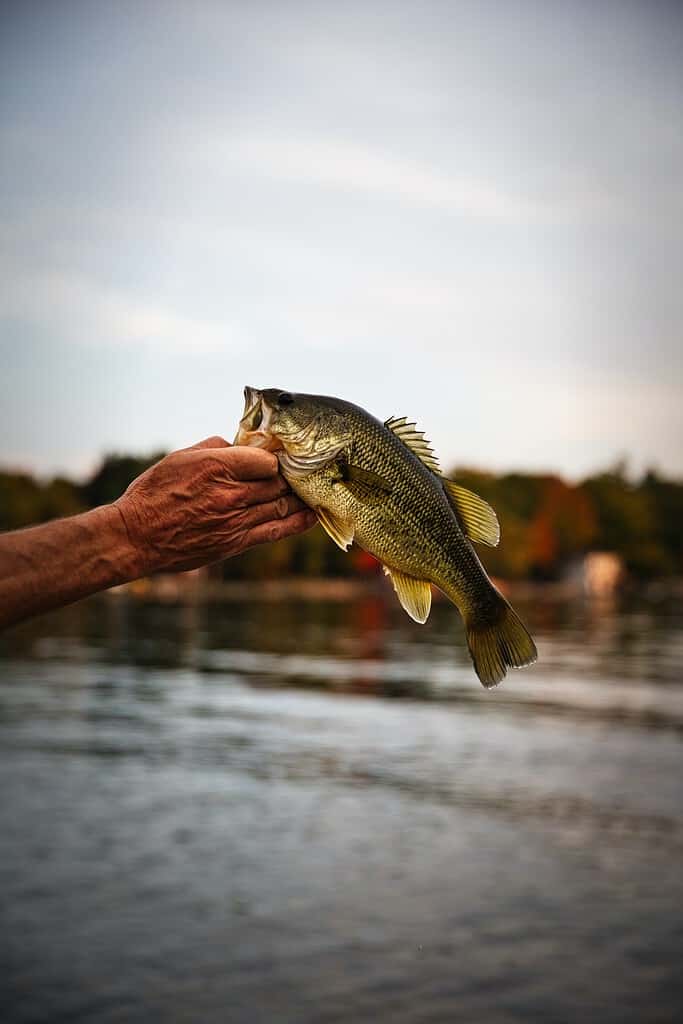
You’ll find that perch on Lake Erie follow distinct seasonal movement patterns; they migrate in search of optimal water conditions and abundant food sources. Understanding their feeding habits is key, as perch voraciously feed on insects, small fish, and crustaceans, which dictates where they’ll be located.
To increase your catch rate, pay close attention to these behaviors and adapt your fishing strategy accordingly.
Seasonal Movement Patterns
Understanding their seasonal movement patterns is key to finding perch in Lake Erie, as they migrate to follow their food sources and the changes in water temperature. Yellow perch, especially, exhibit distinct behaviors throughout the year, which dictate your approach to perch fishing on Lake Erie.
In the spring, they spawn in the shallows, and as summer warms the waters, they move deeper, often forming large schools in the cooler, central basin. Come fall, these schools migrate back to the western basin, seeking the abundant forage that area offers.
Being attuned to these patterns isn’t just about depth and location; you’ll need to adapt your tactics—like your choice of lures and bait—to align with the perch’s seasonal preferences.
Perch Feeding Habits
Why not delve into the eating patterns of perch to enhance your chances of a successful catch on Lake Erie? Understanding the perch bite is pivotal. Yellow perch on Lake Erie tend to feed aggressively, making live bait like emerald shiners and minnows irresistible. Their behavior can be predictable; they often hunt in schools, ambushing prey with precision.
Here’s a quick reference to visualize their preferences:
| Bait Type | Attractiveness |
|---|---|
| Emerald Shiners | Highly Preferred |
| Minnows | Very Effective |
| Worms | Commonly Used |
| Insects | Opportunistic |
| Small Fish | Natural Prey |
This table should imprint the significance of bait selection on your strategy. Always adapt your approach to the prevalent feeding habits for a fruitful outing.
Seasonal Fishing Strategies
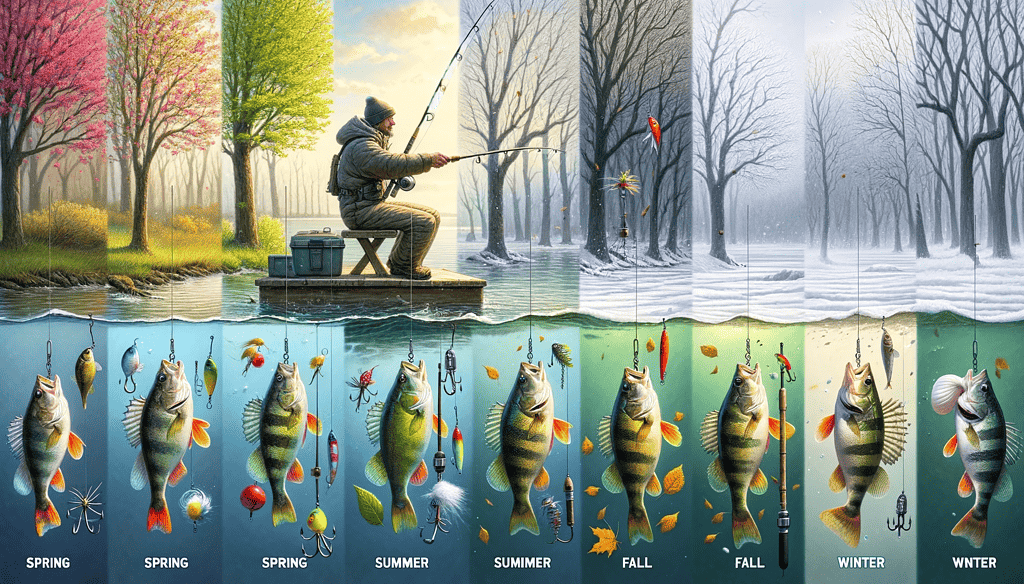
As you chase perch throughout the year on Lake Erie, adapting your tactics to the seasons is crucial for success.
Winter’s icy grip necessitates a precise jigging technique, capitalizing on the slower metabolism of fish.
Come summer, you’ll find casting in specific locations yields the best results, as perch feed more aggressively in the warmer waters.
Winter Jigging Tactics
Your winter jigging tactics for perch fishing on Lake Erie should adapt to the colder water temperatures, targeting deeper areas where schools tend to congregate. When the lake freezes over, ice fishing becomes your go-to method.
Here’s a succinct strategy to boost your catch:
- Utilize a sensitive jigging rod paired with a braided line for better bite detection and immediate hook sets.
- Tip your jig with live minnows; their natural movement entices sluggish winter perch.
- Choose a jigging spoon for its erratic action, mimicking distressed prey to trigger strikes.
- Drill multiple holes to efficiently locate active schools, staying mobile to follow their movements under the ice.
Master these tactics, and you’re set for a productive winter on Lake Erie.
Summer Casting Locations
Transitioning from winter jigging to summer casting, you’ll find that perch tend to migrate to shallower structures as water temperatures rise. During the summer months, Lake Erie, being the shallowest of the great lakes, warms quickly, prompting schools of fish to occupy nearshore reefs and submerged humps.
To find perch, you’ll need to focus on areas where transitional zones meet—where sandy bottoms give way to rock or weed edges. Precision in your angling approach is critical; utilize detailed charts and sonar to pinpoint these hotspots. Cast small jigs or spinners, methodically working your lures through promising zones to entice a strike.
Now, let’s delve into identifying the ideal perch fishing locations where you can maximize your catch rates.
Ideal Perch Fishing Locations
You’ll want to target specific depths and structures to find the most productive perch fishing zones in Lake Erie.
Focus on areas where underwater features attract schools, such as drop-offs, reefs, and submerged weed beds.
Keep in mind that perch often associate with these structures in pursuit of prey, so accurate sonar readings are crucial.
Depth for Perch
Determining the optimal depth for perch fishing in Lake Erie is crucial, as these fish are known to inhabit various water layers depending on the season and time of day. To effectively catch fish, especially yellow perch, understanding the water column is essential.
Here are some insightful tips:
- Utilize a fish finder to locate schools of perch within the water column.
- During early mornings and evenings in summer, target depths of 15-30 feet where perch often feed.
- As water temperatures cool, perch may move deeper; consider depths up to 60 feet in late fall.
- Always monitor the fish finder for changes in perch location, as they can shift quickly to follow baitfish or adjust to water temperature and light levels.
Structure Attraction Zones
While you’re searching for the perfect spot to reel in perch on Lake Erie, keep in mind that they’re often drawn to areas with distinct underwater structures, such as reefs, drop-offs, and rocky bottoms. These structure attraction zones are integral to successful perch fishing.
Position your boat precisely above these areas, anchoring securely or using spot-lock technology to maintain your position in the basin. Employ a perch rig, ideally with a spreader, to keep your bait presentation appealing and avoid tangles. The correct sinker weight is crucial to hit the right depth and stay in contact with the structure.
Recommended Gear and Tackle

To maximize your success when targeting Lake Erie’s perch, you’ll need to select the right rod and bait.
Opt for a light, fast-action spinning rod that’ll give you the sensitivity to detect those subtle nibbles and the backbone to pull up your catch.
Pairing this with live emerald shiners or well-chosen artificial lures can make all the difference in your haul.
Optimal Rod Selection
You’ll need a versatile rod setup for perch fishing on Lake Erie; a light-power, fast-action spinning rod with a sensitive tip is ideal for feeling those subtle bites. As an experienced angler, you know the importance of the right gear. Here’s what you should consider:
- Rod Length: Choose a 6-7 foot rod for the perfect balance of casting distance and sensitivity.
- Reel Match: Pair your rod with a quality spinning reel that has a smooth drag system to handle delicate perch fishing scenarios.
- Line Choice: Spool your reel with a 4-6 lb test braid for near-zero stretch, increasing bite detection.
- Leader Material: Attach a 2-3 foot fluorocarbon leader to reduce visibility and improve abrasion resistance without compromising the rod tip’s sensitivity.
Effective Bait Choices
Having selected your rod and reel setup, it’s time to consider the bait and tackle that’ll entice perch to bite. Live emerald shiners are the gold standard for perch in Lake Erie, known for their effectiveness. If you can’t get your hands on emerald shiners, golden shiners are a fine alternative. It’s essential to pair these baits with the right gear for optimal results.
| Bait Type | Tackle Recommendation |
|---|---|
| Live Emerald Shiners | Light wire hooks, size 4-6 |
| Golden Shiners | Drop shot rigs |
| Soft Plastic | Jig heads, 1/16 to 1/8 ounce |
| Chopped Bait Pieces | Spreaders with multiple arms |
| Live Larvae | Small, thin-wire hooks |
Mastering the Perfect Cast
You’ll find that striking the balance between cast accuracy and distance is critical for Lake Erie perch fishing. Precision often trumps sheer range, as placing your bait in the midst of a perch school requires a deft touch.
Mastering the underhand pitch can be a game-changer, enabling you to quietly present baits with minimal disturbance.
Cast Accuracy
Mastering your casting technique ensures you’ll drop your bait precisely over those elusive Lake Erie perch schools. As a seasoned perch angler aiming for those jumbo perch, your cast’s accuracy can mean the difference between a nibble and a catch. Here are a few technical tips:
- Practice Your Stance: Align your body parallel to the target area; a stable stance improves accuracy.
- Control Your Cast: Use a smooth, fluid motion to maintain control over the hook’s trajectory.
- Adjust for Wind: Compensate for wind drift by aiming slightly upwind, allowing the breeze to carry your drop shot into position.
- Visualize the Target: Imagine the trajectory and endpoint before casting to enhance your focus and precision.
Honing these skills will significantly improve your success in catching yellow perch.
Distance vs Precision
When targeting perch in Lake Erie, balancing the distance of your cast with precision is crucial for landing your bait in the sweet spot. Mastering this aspect of perch fishing techniques for Lake Erie involves understanding the interplay between distance vs precision.
Too far, and you’ll overshoot the school; too short, and you’ll miss the zone entirely. Precision casting means considering the angle relative to your boat’s position, which can be held steady with a trolling motor equipped with spot lock. This allows you to focus on the subtleties of your technique without the boat drifting.
Achieving pinpoint accuracy often means the difference between a stellar haul and coming up empty. Remember, it’s not just about heaving your line out there—it’s about the strategic placement of your bait.
Frequently Asked Questions
How Do Weather Conditions Affect Perch Fishing Success Rates on Lake Erie?
Weather patterns greatly impact your perch fishing success. Storms and temperature shifts can disperse schools, while stable conditions often lead to increased bites. Always monitor forecasts to plan your outings.
Can Perch Fishing Be a Sustainable Practice, and What Regulations Are in Place to Ensure It?
Perch fishing can be sustainable if you respect regulations like catch limits and seasons, ensuring this aquatic tapestry remains vibrant. Authorities set these rules to balance sport with conservation efforts.
What Are the Common Challenges Faced When Perch Fishing on Lake Erie and How Can Anglers Overcome Them?
You’ll face unpredictable schools and varied depths when perch fishing. Overcome this by using sonar technology and staying mobile, quickly adapting techniques and bait to the perch’s location and activity levels.
How Does Bycatch Impact Perch Fishing on Lake Erie, and What Measures Can Be Taken to Minimize It?
Like a net cast too wide, bycatch can disrupt Lake Erie’s balance. You’ll need selective gear and mindful practices to ensure your perch haul doesn’t harm unintended aquatic bystanders. It’s precision, not just luck.
Are There Any Community Events or Tournaments for Perch Fishing on Lake Erie, and How Can One Participate?
You can join community events and tournaments for perch fishing by checking local fishing clubs, online forums, and bait shops for schedules and registration details. It’s a great way to connect with fellow anglers.
Conclusion
So, you fancy yourself a perch whisperer now, don’t you? After toying with the whims of Lake Erie’s elusive striped dancers, you’ve mastered the art of the vertical tease.
Your rod’s a wand, the sonar’s your crystal ball, and those perch? Merely pawns in your grand aquatic chess game. Congrats, angler extraordinaire—you’ve outsmarted a fish with a brain the size of a pea.
Tight lines and tall tales at the dock, my friend.
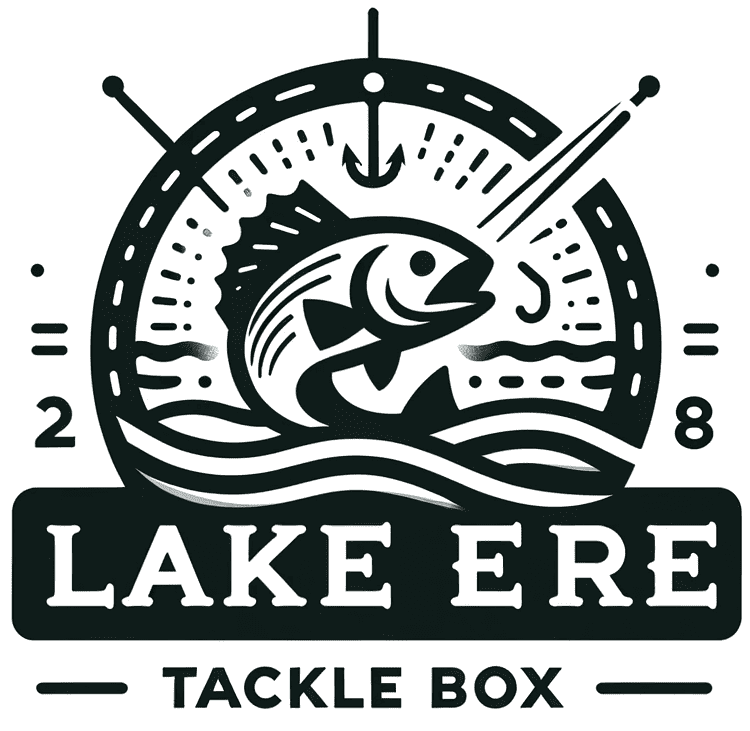
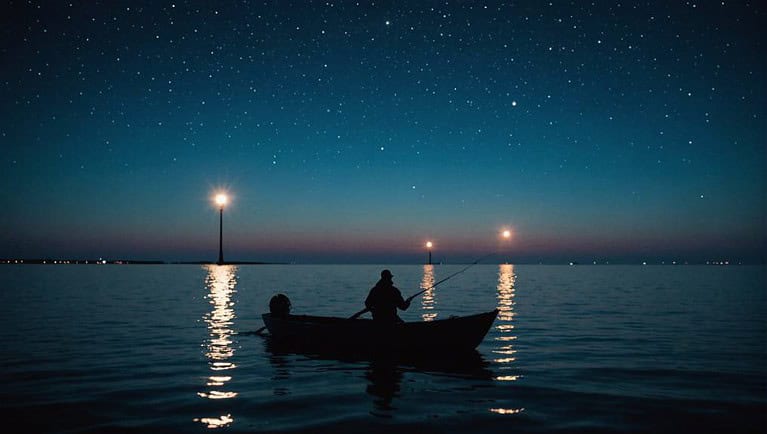
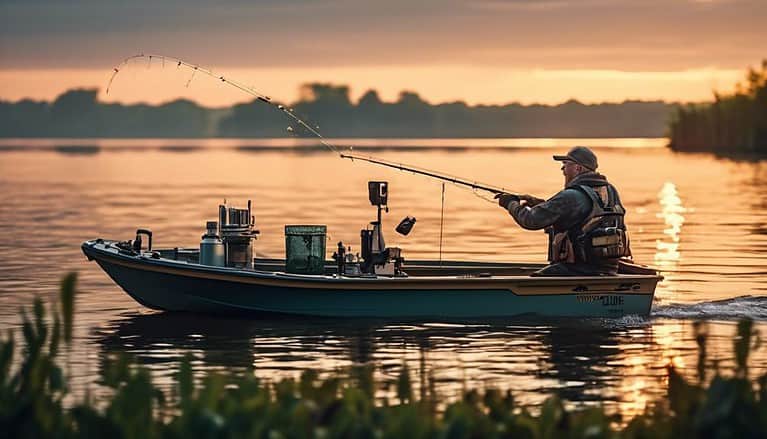

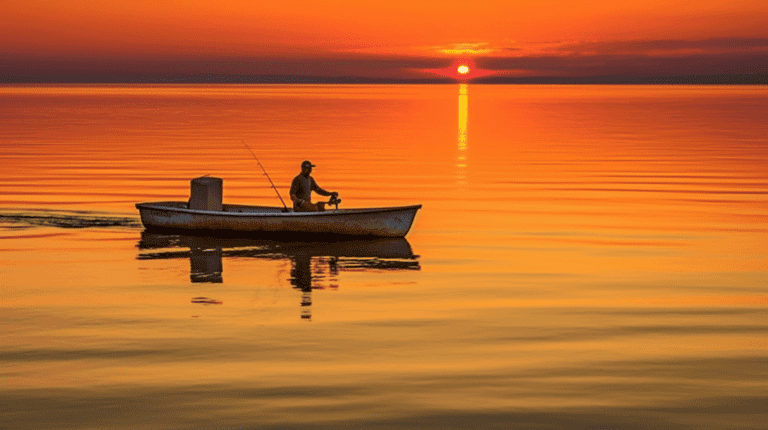
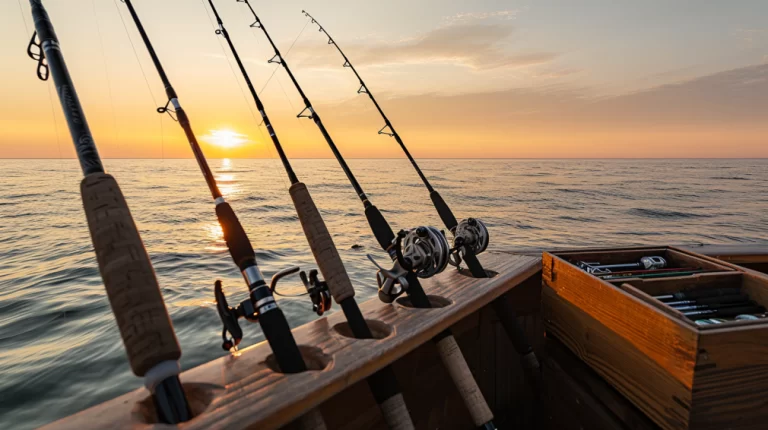
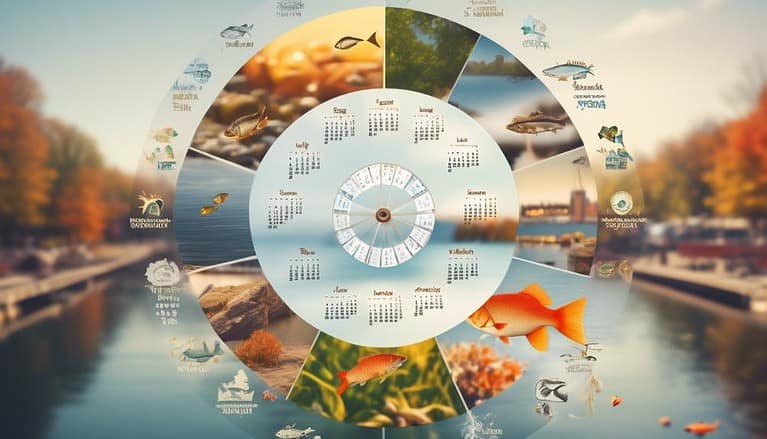
2 Comments
Comments are closed.